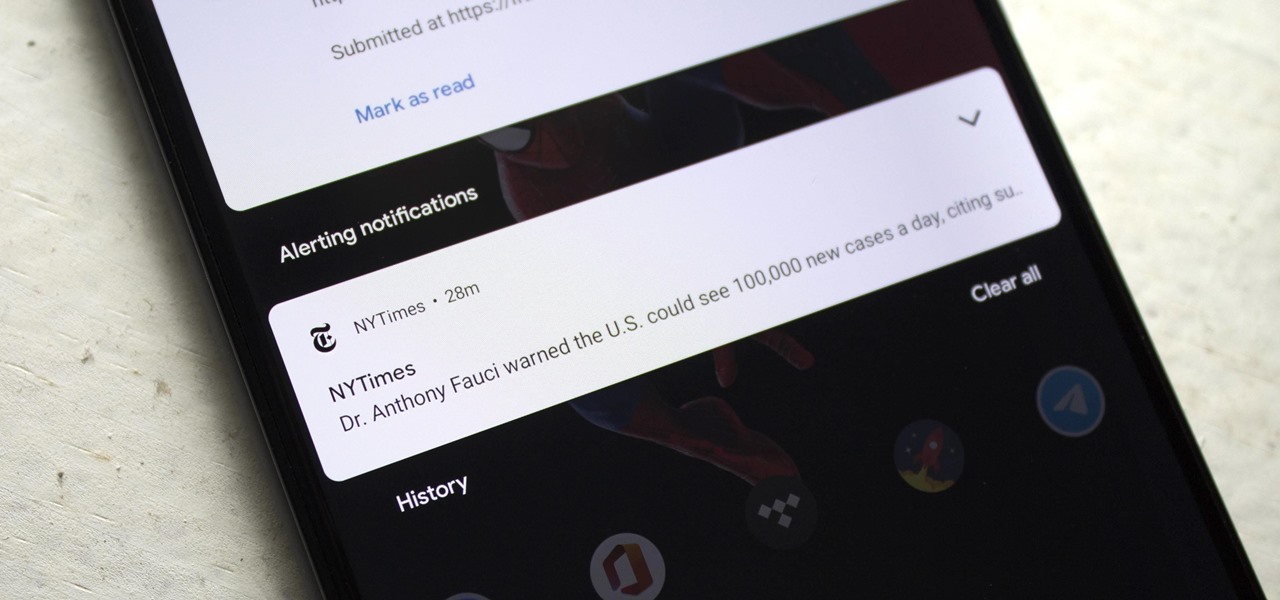
Source: Android.gadgethacks.com
Common Causes of Non-Working Text Notifications
Text notifications on Android devices can stop working for various reasons. Understanding these causes can help in troubleshooting the issue effectively.
Disabled App Notifications
- Notifications for the messaging app might have been disabled accidentally.
- Misconfiguration in settings or an app update could change notification settings.
Battery Optimization
- Battery optimization features can restrict apps from running in the background.
- If restricted, the messaging app might not send notifications.
Do Not Disturb Mode
- This mode silences all notifications, including text messages.
- If enabled, notifications will not be received.
Power Saving Mode
- Power saving modes can affect app functionality, including notifications.
Muted or Blocked Contacts
- Muting or blocking specific contacts in the messaging app prevents notifications from those contacts.
App Conflicts
- Third-party apps might interfere with the messaging app's notifications.
- Apps that automate tasks or filter notifications could mute the messaging app.
Outdated Messaging App
- Using an outdated version of the messaging app can lead to bugs and issues.
System Updates
- System updates can sometimes affect app functionality, including notifications.
App Data Corruption
- Corrupted app data can cause issues with app functionality, including notifications.
Hardware Issues
- Rarely, hardware issues with the device can cause problems with text notifications.
Troubleshooting Steps
Follow these steps to troubleshoot and fix text message notifications on your Android device.
Check App Notifications Settings
- Open Settings: Go to your device's settings app.
- Navigate to Notifications: Scroll down to find the "Notifications" section.
- Select App Notifications: Tap on "App notifications."
- Choose the Messaging App: Select the messaging app from the list.
- Enable Notifications: Ensure notifications are enabled. Toggle the switch if disabled.
- Check Priority: Set notification priority to "High" or "Default."
Clear App Cache
- Open the Messaging App: Launch the messaging app.
- Access Storage Settings: Tap and hold the app icon until the "i" icon appears.
- Go to Storage: Tap the "i" icon and navigate to "Storage."
- Clear Cache and Data: Tap "Clear cache" and then "Clear data."
Reset App Preferences
- Open Settings: Go to your device's settings app.
- Navigate to Apps: Scroll down to find the "Apps" section.
- Select the 3 Dot Icon: Tap the three dots in the upper right corner.
- Reset App Preferences: Select "Reset app preferences."
- Confirm Reset: Tap "Reset" to confirm.
Turn Off Battery Optimization
- Open Settings: Go to your device's settings app.
- Navigate to Battery: Scroll down to find the "Battery" section.
- Select Battery Optimization: Tap on "Battery optimization."
- Find the Messaging App: Locate the messaging app in the list.
- Set No Restrictions: Set the app to "No restrictions" or "Unrestricted."
Disable Do Not Disturb Mode
- Open Settings: Go to your device's settings app.
- Navigate to Sound & Vibration: Scroll down to find the "Sound & vibration" section.
- Select Do Not Disturb Mode: Tap on "Do not disturb."
- Turn Off Do Not Disturb Mode: Toggle off the switch.
Check for Conflicts with Third-Party Apps
- Identify Conflicting Apps: Check settings of third-party apps that manage or silence notifications.
- Temporarily Disable Conflicting Apps: Disable these apps one at a time to see if notifications resume.
Update the Messaging App
- Open Google Play Store: Launch the Google Play Store app.
- Search for Messaging App: Search for the messaging app.
- Update the App: Tap "Update" if an update is available.
- Reinstall the App: Uninstall and reinstall the app if updating doesn't work.
Update Android OS
- Open Settings: Go to your device's settings app.
- Navigate to Software Update: Scroll down to find the "Software update" section.
- Check for Updates: Tap on "Check for updates."
- Install Updates: Tap "Download & install" if an update is available.
Reboot Your Device
- Reboot Your Device: Press and hold the power button until the reboot option appears.
- Restart Your Device: Select "Restart" to reboot.
Change Messaging App
- Install a Different Messaging App: Consider installing a different messaging app from the Google Play Store.
- Set the New App as Default: Set the new app as the default messaging app.
Check Conversation Settings
- Open System Settings: Go to your device's system settings.
- Navigate to Apps & Notifications: Scroll down to find the "Apps & notifications" section.
- Select Conversations: Tap on "Conversations."
- Check Specific Conversations: Set the conversation to "Default" or "Priority" instead of "Silent."
By systematically going through these steps, you should be able to resolve the issue and get your text message notifications working again.
